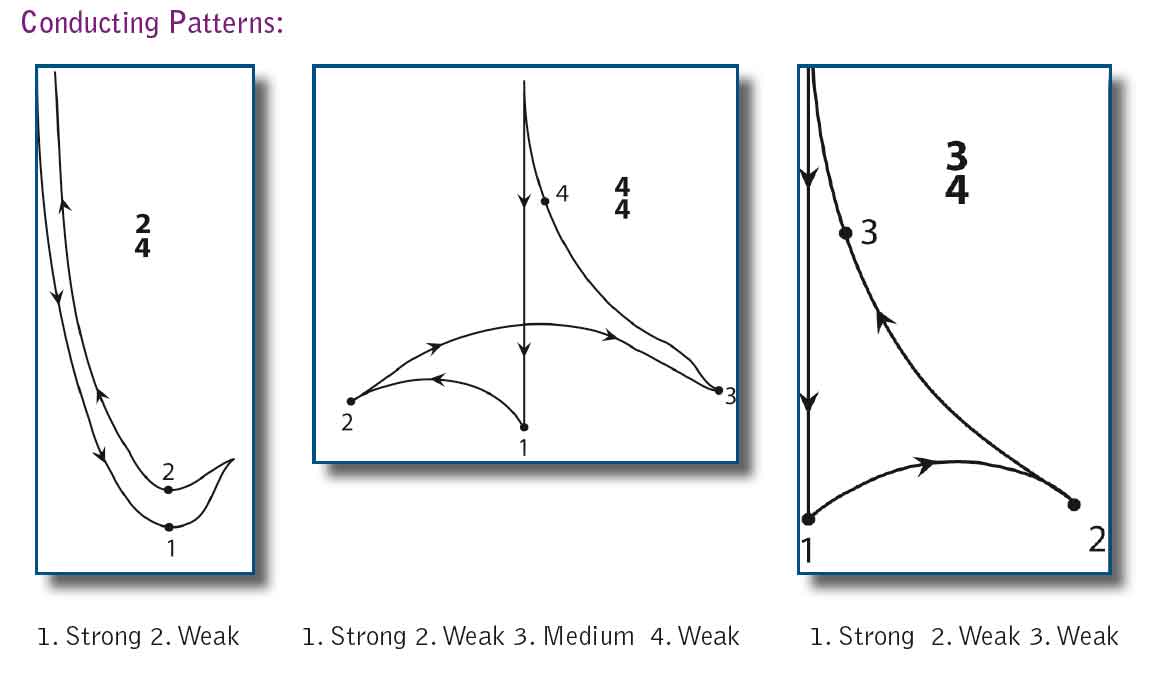Not all choir directors conduct with a baton. My baton was given to me by Michael on behalf of the choir when I started conducting a few years ago. I forgot it at home once and will not make that mistake again. My arms hurt the whole next day. It was exhausting. The baton allows me to make big exaggerated movements with a moderate amount of effort.
I learned how to conduct in band class in high school (Maybe already in jr. high. I can't remember.) and I liked being able to follow the baton and count down-beats, and see where the third beat is when that's where I need to come in.
I try to give the choir what I would like to have to follow when I'm singing. So, I try to always give a strong beat #1, even when I don't give every single beat. I try to give every single beat even while giving clear start and stop signals, and trying to show where the dynamics should be going, but sometimes I can't. Beat one and starts and stops are the priorities. It helps us to stay together. That's really important.
Anyways, I thought I'd make it clear here what it is I'm doing when I'm standing in front of the choir waving my baton and my hands about.

1. When there are two beats in the bar, it looks like the first one. That's for cut time, or 2/4 or even 6/8. It just goes down and up and down...
2. The second pattern is the pattern I use for 4/4 time. That's 4 quarter notes per bar. It's the most common time signature. Sometimes it's called Common Time and marked with a C. "It goes like this" for Hallelujah too, which is 12/8. This is the way I see it. You see it the other way, with beat two on your right and three on your left, a mirror image.
3. A waltz-like 3/4 time looks like the third pattern, only the mirror image because that's what I'm doing and you're facing me, so you see 2 on the left.
Notice that the in 3/4 and 4/4 you get left-up before beat 1.
Another thing I do to help you is to take a big breath just before you're supposed to come in.
I hold my left hand open to show you to hold a note and then I close it in a fist when you stop. This you know very well because I always make a point of getting everyone to stop at the same moment, especially when we're ending on an S sound. I call it cutting you off. Watch for the cut offs!
People always comment on the way my hair moves when I conduct. I usually emphasize starts with my head, so when I take my deep breath in, I'm also moving my head up. And when the baton comes down, so does my head. My hair follows. I know that you can't all see all of me all of the time, so I try to give you all kinds of cues. I use my head and shoulders and even elbows to show eighth notes, or sixteenths or triplets, any extra beats between the ones the baton does.
Another important signal is when I put my left hand in front of my face. Usually my index finger is also pointing up, like shhhhh! But sometimes I show you my open palm in front of my mouth. That means you're too loud. Sing softer. I have to do this for You Raise Me Up and for Hallelujah, because you forget to sing the chorus softly the first couple of times.
If you ever have any questions about what I'm doing when I'm conducting, go ahead and ask. I'm sure others will also be wondering.
So, next time you sing, look out for beat one, and watch for when I've got my hand in front of my face and when I make a fist.
Yours in harmony,
No comments:
Post a Comment